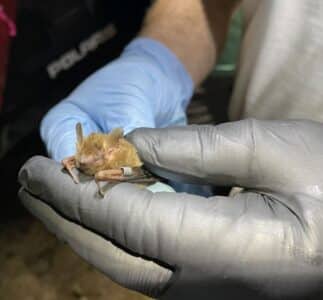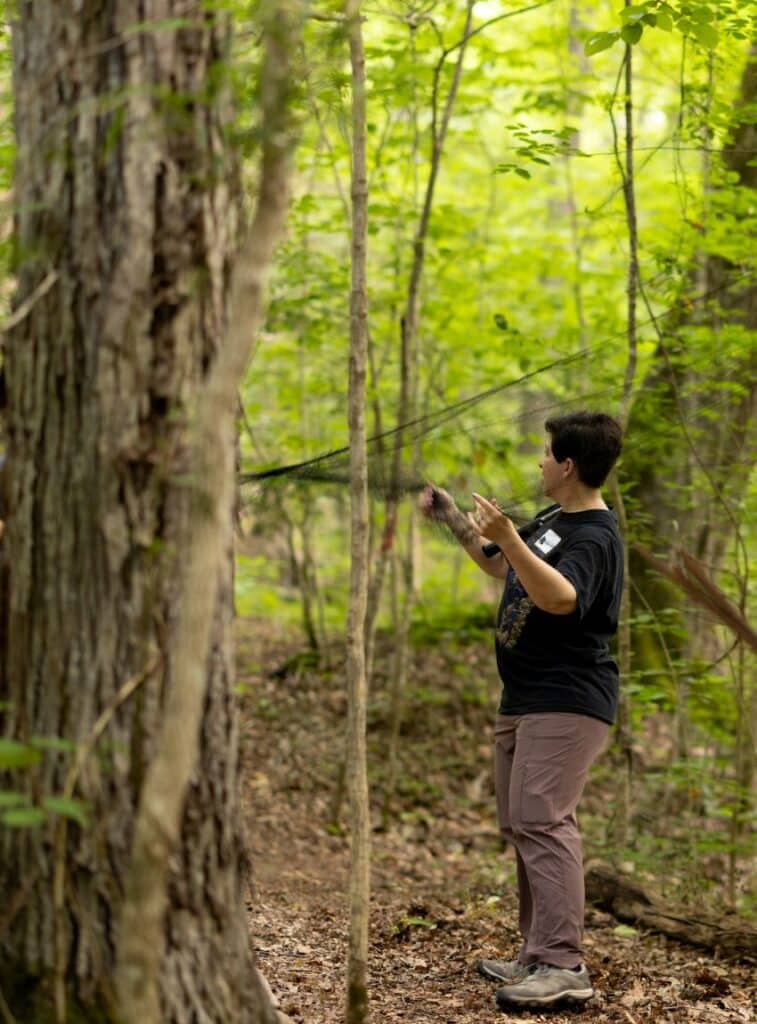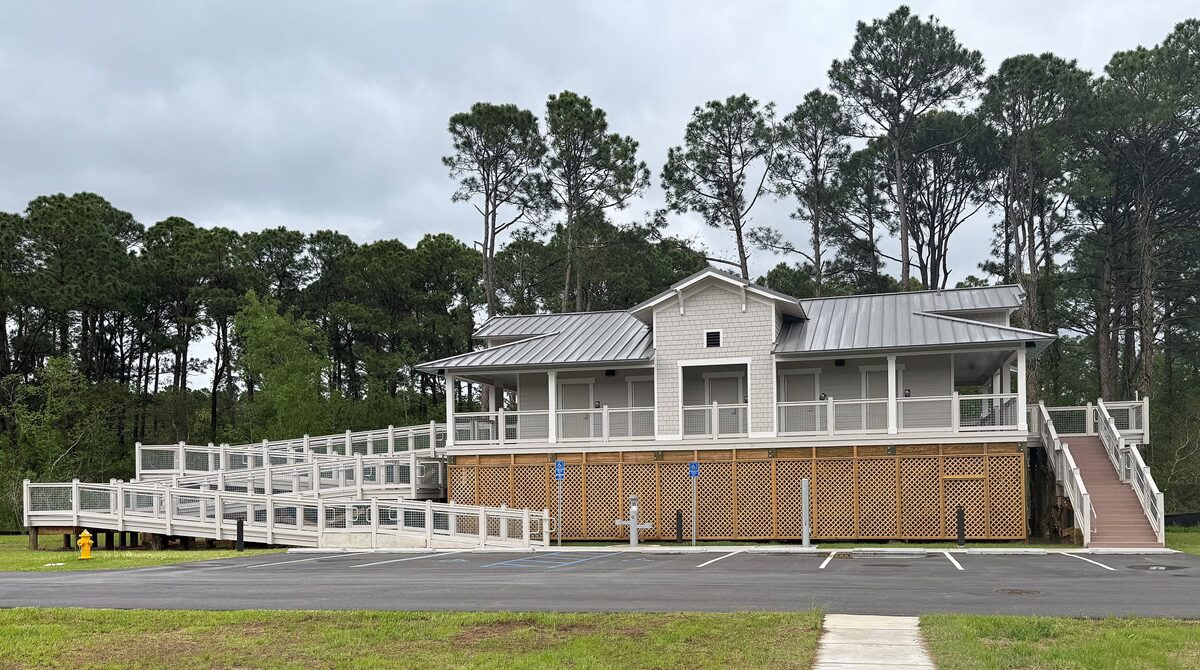Alabama ‘Bat Blitz’ sheds light on bats and deadly virus destroying their populations

During the recent Bat Blitz in Jackson County, Alabama, biologists and bat experts found bat populations and checked them for injury and signs of white-nose syndrome. The devastating fungus – which has no known cure – infects bats and is responsible for major declines in some species. Alabama Power and several state agencies, universities, nonprofits and other groups are seeking to learn more about the vulnerable bat populations and how to protect them from the deadly disease. (contributed)
For millennia, bats have been shrouded in mystery and misconception. Many people fear the miniature flying mammals, which appear at dusk to look for food and water.
It has only been since the mid-1900s that scientists began to recognize bats for what they are: tiny, sonar-driven animals that rid the atmosphere of annoying mosquitoes and other flying bugs.

Biologists carefully checked bats for symptoms of white-nose syndrome. (Photo by Dylan Shaw)
For about 20 years, biologists with the Alabama Department of Conservation and Natural Resources, U.S. Fish and Wildlife Service, the U.S. Forest Service, Alabama Power and other groups have partnered to study bats in the Southeast.
Alabama Power biologists Jeff Baker and Dylan Shaw recently helped conduct a “bat blitz” with bat experts from throughout the Southeast. The Alabama Bat Working Group works to safeguard these tiny mammals and bring their benefits to light.
The mission: Find bat populations and check them for injury and signs of white-nose syndrome (WNS). The devastating fungus – which has no known cure – infects bats and is responsible for major declines in some species.
In 2008, no Alabama bats were known to be infected with WNS, said Allison Cochran, wildlife biologist for the Forest Service. The disease has since spread to bats in more than half of the country – including Alabama – and has caused millions of bat deaths.

With the 70-member team, Shaw and Baker journeyed deep into the forest in Jackson County, the state’s northeasternmost area, to catch and study bats. Different species emerge at different times: While bats essentially emerge at dusk, some appear a little earlier and some slightly after.
Catching the mammals requires preparation. The team sets up fine-mesh nets in those attempts. “It’s about like everything you do in the outdoors with the wildlife profession – you’re always learning something new about these animals you work with,” said Baker, who has worked in the bat blitz for more than 10 years.
“We put up a real fine-mesh net called a mist net, right at dusk, when bats come out to feed and to drink,” Baker said. “We put them in areas where they will likely fly, such as a flight corridor where they travel from roosting to feeding areas, or over water where they may come to drink. We set that up and we check it every 10 minutes, from just before dusk to about 12:30 or 1 a.m.”
When the bats are captured, the biologists check gender, identify their species and check for injury or disease – such as deadly WNS – then release them. Some bats are tagged with a radio transmitter so biologists can track their travel patterns.
The arrival of WNS has had a huge impact on this vulnerable species.
“White-nose syndrome has killed millions of bats across the country,” said Cochran, who took part in her first bat blitz in 2002. “It started occurring around 2006 and arrived in Alabama around 2012. We have definitely seen a marked decline in the number of cave-dwelling species, so we’re just not catching those bats that live in caves in the same numbers we used to.”
Bat experts began conducting regular blitzes around 2005, growing and moving around Alabama each year so that different areas, habitat and species could be surveyed. These events have helped bat experts expand their knowledge about the range of some species, especially the rarer ones, and they have also learned about the habitats used by bats, where they occur and how the bat populations are faring over time.
Ever-intriguing mammal is ecologically important
The groups that take part in the bat blitz fully recognize the animals’ importance in the environmental hierarchy.
Bats are highly important ecologically. Baker noted that, in Alabama, every bat species is an insectivore, so they eat nothing but insects – and lots of them.
“Bats provide really important benefits to the ecosystem and major financial savings to agriculture in Alabama by reducing the need for pest control,” Baker said. “Globally, they’re important for various reasons – they pollinate plants that other animals and humans eat. And some eat nothing but fruit. So, they’re really important for spreading seeds across the landscape and helping fruit trees to spread.”
To date, there is no treatment for WNS. However, Baker noted that Southern Company is helping to fund research through partnerships, such as the Bats for the Future Fund, to cure this fungal disease that’s destroying the country’s bat population.
Baker said the bat blitz provides a chance to learn more about this intriguing order of mammals.
“One of the most satisfying parts of my job, specifically, with an event like the bat blitz, is it’s a cooperative effort bringing a lot of people together with a common shared interest,” Baker said. “One thing I’ve learned through being involved in conservation work is that shared efforts create the most benefits for our communities and ecosystems.”
Find out more about the Alabama Bat Working Group here.












